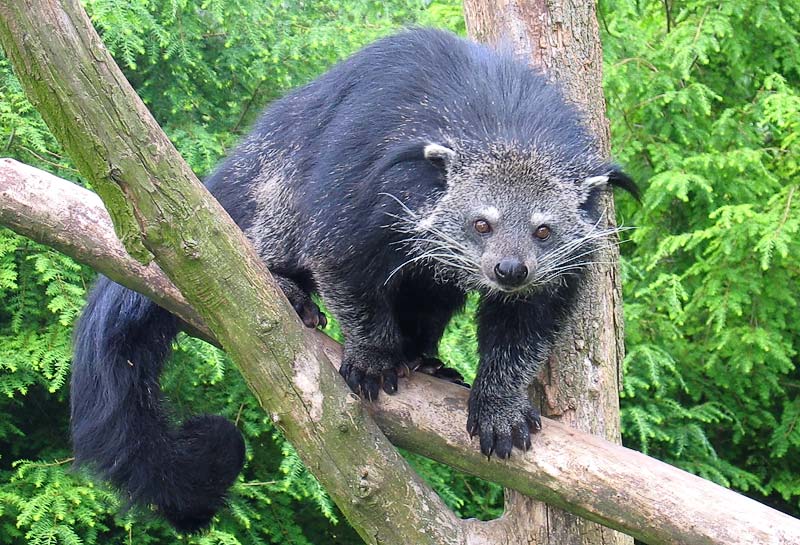Guardians of the Night: Why Preserving the Binturong is Essential
The binturong, also known as the bearcat, is a fascinating and unique creature that roams the forests of Southeast Asia. With its distinctive appearance and playful demeanor, this arboreal mammal holds a key role in maintaining the delicate balance of its habitat. However, the binturong is facing various threats that jeopardize its survival, making the preservation of this remarkable species more crucial than ever. By understanding the importance of protecting the binturong, we can ensure the well-being of not just this elusive animal, but also the diverse ecosystem it calls home.

Binturong Habitat
The binturong, also known as the “bearcat,” is a fascinating creature that calls the dense forests of Southeast Asia its home. These elusive animals are primarily found in countries such as Indonesia, Malaysia, and the Philippines. The lush tropical rainforests serve as the perfect habitat for the binturong , providing ample trees for climbing and dense vegetation for hunting.
With their strong prehensile tails and sharp claws, binturongs are well-adapted to life in the treetops. They spend much of their time in the canopy, foraging for fruits and small animals. These arboreal creatures rely on the diverse ecosystem of the forest for their survival, from the canopy where they rest to the forest floor where they search for food. Preserving their habitat is crucial to ensuring the long-term survival of the binturong species.
Deforestation and habitat destruction pose significant threats to the binturong's natural habitat. As human activities continue to encroach on the forests, the binturong's home is increasingly fragmented and degraded. Without intervention, the binturong population will continue to decline, pushing this unique species closer to the brink of extinction.
Threats to Binturong Population
Binturongs face various threats to their population due to habitat loss caused by deforestation and agricultural expansion. As their forest homes are destroyed, binturongs lose their natural habitats and sources of food, leading to a decline in their numbers. The fragmentation of forests also isolates binturong populations, making it challenging for them to find mates and maintain genetic diversity.
Furthermore, binturongs are often hunted for their fur, meat, and traditional medicine purposes. This illegal trade poses a significant threat to the species, especially in areas where enforcement of wildlife protection laws is lacking. Poaching not only reduces binturong populations directly but also disrupts their natural behaviors and social structures, further endangering their survival in the wild.
Climate change is another growing concern for binturongs, as it impacts the availability of resources and alters their ecosystems. Shifts in temperature and rainfall patterns can disrupt the binturongs' breeding cycles and food sources, affecting their overall well-being. Adapting to these changes becomes increasingly challenging for binturongs, putting additional stress on their already vulnerable populations.
Conservation Efforts
Conservation efforts for the binturong are crucial to ensure the survival of this unique species. By establishing protected habitats and promoting sustainable practices, organizations aim to safeguard the binturong's natural environment. These initiatives include monitoring populations, addressing habitat loss, and combating illegal wildlife trade.
In addition to habitat protection, raising awareness about the importance of binturong conservation is integral to garnering public support. Education programs, outreach campaigns, and community engagement play vital roles in instilling a sense of responsibility towards preserving the binturong. By involving local communities, conservationists can foster a sense of stewardship for the species and its habitat.
Collaboration between governments, NGOs, researchers, and local communities is fundamental in implementing effective conservation strategies for the binturong. Through partnerships and coordinated efforts, stakeholders can work together to address threats to the species, promote sustainable practices, and secure a future where the binturong thrives in the wild.